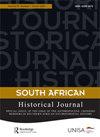红色自由之路:南非共产党历史,1921-2021
IF 1
3区 历史学
Q1 HISTORY
引用次数: 3
摘要
Tom Lodge揭开了南非共产党(CPSA)(现在被称为南非共产党(SACP))10年的历史,无缝地揭示了南非反殖民和反种族隔离阶级斗争中最重要运动之一的兄弟之旅。用于将这本书编织在一起的档案研究材料使它具有了非常强大的知识优势,因为它能够通过其嵌入矿山工人和工业工人(工会)阶级斗争中的DNA来提供CPSA的家谱描述。从社会主义团体的早期形成及其与其他国际社会主义运动的联系,到CPSA的成立和与民族解放运动的联盟,洛奇成功地为南非现有的共产主义文献增添了内容,包括它是如何在南非产生的,它在塑造流亡中的解放斗争中发挥了什么作用,以及它在解放后的三方联盟中继续占据影响力的程度。他的书为我们提供了丰富详细的描述,这些描述始于金矿的复兴,金矿吸引了许多来自大陆和东欧、英国、澳大利亚、美国和亚洲的非洲移民和白人移民。他能够展示欧洲移民的到来,特别是那些曾加入意大利社会主义团体、德国社会主义民主党人、俄罗斯自由之友和犹太外滩的人,他们接触了马克思主义教义,如何将革命战略带入20世纪20年代初的劳工运动。洛奇展示了在这一时期,这些团体是如何在组织矿工罢工和在劳工斗争中使用叛乱策略方面发挥关键作用的。此外,种族劳工保留问题也成为共产主义者必须仔细思考如何将自己与排外的白人社会党和工党区分开来的纽带,这些政党很少关注代表非洲矿工并将其纳入工会和劳工运动。在这里,我们开始看到共产主义者中出现了一位杰出人物,西德尼·邦廷,他是国际社会主义联盟的成员。通过非洲工业工人的成立,与德兰士瓦原住民大会和国际社会主义联盟成员共产主义者的联系开始形成。然而,正如我们在书中所看到的,共产党员和活动家的存在主要集中在约翰内斯堡和开普敦,伊丽莎白港的存在越来越多,德班的印度人也支持他们,他们隶属于印第安人本文章由计算机程序翻译,如有差异,请以英文原文为准。
Red Road to Freedom: A History of the South African Communist Party, 1921–2021
Uncovering the 10 decades of the history of the Communist Party of South Africa (CPSA), now known as the South African Communist Party (SACP), Tom Lodge seamlessly reveals a fraternal journey in the formation of one of the most significant movements in the anti-colonial and anti-apartheid class struggles in South Africa. The archival research material used to knit this book together has given it a very robust intellectual supremacy in terms of its ability to provide a genealogical account of the CPSA through its DNA that is embedded in the class struggles of mine workers and industrial workers (trade unions). From the early formations of socialist groups and their linkages with other international socialist movements, leading up to the formation of the CPSA and forging alliances with national liberation movements, Lodge has managed to add to the existing literature about communism in South Africa, including how it came into existence in South Africa, what role it played in shaping the liberation struggle in exile, and the extent to which it continues to occupy an influential position in the tripartite alliance post liberation. His book provides us with richly detailed descriptions that begin from the revival of gold mines, which lured many African migrants and white immigrants from Continental and Eastern Europe, England, Australia, the Unites States and Asia. He is able to show how the arrival of European immigrants, particularly those who had been part of the Italian Socialist Groups, German Socialist Democrats, Friends of Russian Freedom and Jewish Bund who were exposed to Marxist teachings, brought revolutionary strategies into labour movements from the early 1920s. Lodge demonstrates how, during this period, these groups played a key role in organising mine workers’ strikes and using insurrectionary strategies in labour struggles. In addition, the issue of racial labour reservation also became the nexus through which communists had to carefully think about how to distinguish themselves from exclusive white Socialist and Labour parties that paid little attention to representing and incorporating African mine workers into the union and labour movements. Here, we begin to see the emergence of a prominent figure amongst communists, Sidney Bunting, who was a member of the International Socialist League. Through the formation of Industrial Workers of Africa, the connections with the Transvaal Native Congress and communists who were members of the International Socialist League began to take shape. However, as we can see in the book, the presence of the Communist Party members and activists was mainly concentrated in Johannesburg and Cape Town, with a growing presence in Port Elizabeth and support of Indians in Durban who were affiliated to the Indian
求助全文
通过发布文献求助,成功后即可免费获取论文全文。
去求助
来源期刊

South African Historical Journal
Multiple-
CiteScore
0.70
自引率
0.00%
发文量
37
期刊介绍:
Over the past 40 years, the South African Historical Journal has become renowned and internationally regarded as a premier history journal published in South Africa, promoting significant historical scholarship on the country as well as the southern African region. The journal, which is linked to the Southern African Historical Society, has provided a high-quality medium for original thinking about South African history and has thus shaped - and continues to contribute towards defining - the historiography of the region.
 求助内容:
求助内容: 应助结果提醒方式:
应助结果提醒方式:


